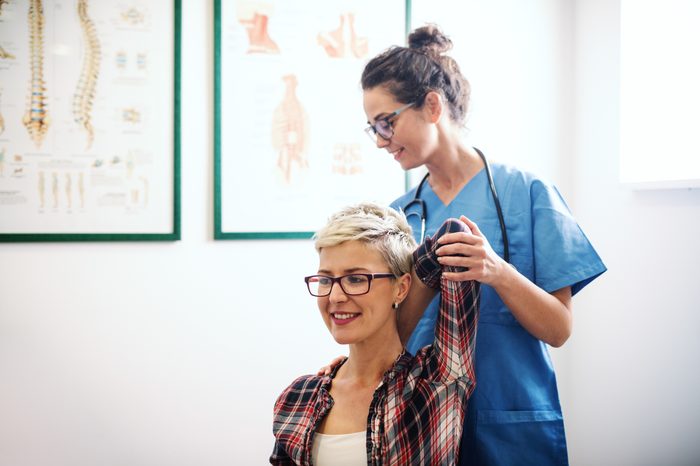
The deal with hidden muscle pain
Sore and not sure why? Your pain may be rooted in problems with unsung and underlying muscles you’ve probably never heard of. “Minor muscles enable large muscles to do their job,” says Bryan Heiderscheit, PhD, PT, a professor of orthopedics & rehabilitation at the University of Wisconsin-Madison. “When the small ones aren’t working properly, it can lead to injury or pain.” That means that rehabilitating those small muscles can lead to overall muscle pain relief. There’s no simple way to know yourself which muscle is responsible for your achiness; a physical therapist or doctor can evaluate pain (and use other diagnostics, like MRI, of course, to pinpoint an issue). But strengthening and stretching these minor-league muscles is a big part of a conservative approach to pain management, so the following exercises will likely help. Here, some common aches and how to avoid them by giving these minor muscles some TLC. (Plus, find out the best home remedies for muscle soreness and pain.)
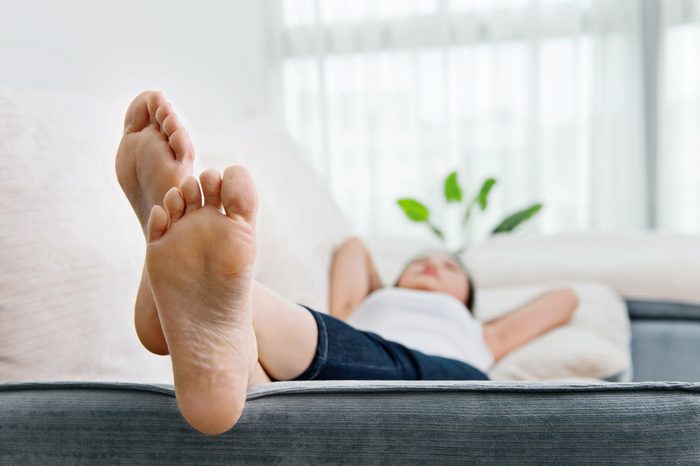
The pain: bottom of foot
Discomfort on the bottom of your big toe could mean you’ve strained the flexor hallucis longus (the muscle that curls your big toe). How it happens: If you have weakness in your hips, it forces other parts of your body—including your foot—to help keep you balanced as you walk. “The big toes grabs the ground and keeps your foot from tipping over,” says Kevin Vincent, MD, PhD, medical director of the University of Florida department of orthopaedics and rehabilitation. Extra strain on the foot causes the flexor hallucis longus to overwork and thus cause pain.
Prevent it: Strengthen the muscles in your foot, as well as in your hips, by doing lunges and squats barefoot or in minimally cushioned shoes. Shoes that are too supportive don’t let your foot muscles build up resilience; spending time barefoot can help strengthen them, Dr. Vincent says. (Don’t miss these pain symptoms you should never ignore.)

The pain: backside
Some pains in the you-know-what often come from a weak piriformis, a muscle that spans across the width of your butt that helps your hips rotate.
Prevent it: To strengthen your piriformis, walk sideways with your knees slightly bent (sort of like a shuffle but with slow, deliberate movements). A tennis ball works well for self-massage at your piriformis, too. Sit on the ball on the floor and roll a bit for a release. Here are more piriformis stretches you can try to find relief.
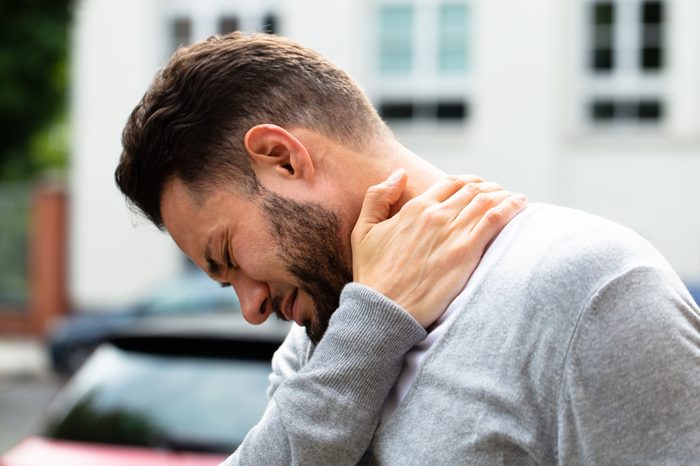
The pain: neck
If you wake feeling like you slept funny, you may have strained one of your scalene muscles, which run along the side of your neck.
Prevent it: Neck pain is often connected with strength issues involving many surrounding areas, including the shoulders and upper back. One of the best ways to keep your neck from going out is to work on good posture, Heiderscheit says. Imagine a string tied to the top of your head and someone is pulling that string to the sky. (These home remedies for neck pain can help you find relief too.)
The pain: lower back
Two muscle groups that can contribute to back pain are the psoas and the multifidus muscle. The psoas, which lies deep inside your hips, gets tight from sitting too much. Multifidi are thin muscles that attach to the vertebrae to help stabilize it. “Several studies show that when you train these muscles, the severity of back pain decreases,” says Heiderscheit.
Prevent it: For lower-back muscle pain relief, get up and walk for at least two minutes every hour, especially if you sit a lot. To stretch the psoas, put one foot and the opposite knee on the ground (like a down position of a lunge). Thrust your hips forward to feel that muscle stretching, says Rachel Cosgrove, certified strength and conditioning specialist and author of The Female Body Breakthrough. To work the multifidus, lie flat on your stomach on the ground or a bed and lift your shoulders off the ground (like a mini cobra yoga move). You can do 20 or 30 of those a day. (Find out what secrets pain doctors won’t tell you.)
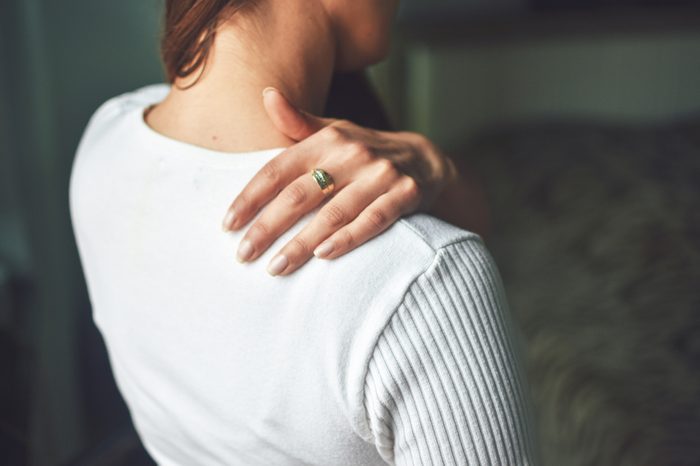
The pain: shoulder
If it’s hard to reach for items above your head or to twist to unhook a bra, the pain could come from an impingement—where your supraspinatus, a small muscle in your upper back, gets pinched in a bone. Slouching forward at the shoulders is a common trigger, Dr. Vincent says.
Prevent it: Opening up your back helps take the pressure off the place where the muscle can get pinched, and ultimately bring you muscle pain relief. One simple home exercise: Hold some kind of lightweight (like a can of food or a jug of water) in each hand by your side, bend slightly forward and lift them up to your sides, concentrating on squeezing your shoulder blades together. (Next, find out the signs your muscle pain is actually a sign of something worse.)
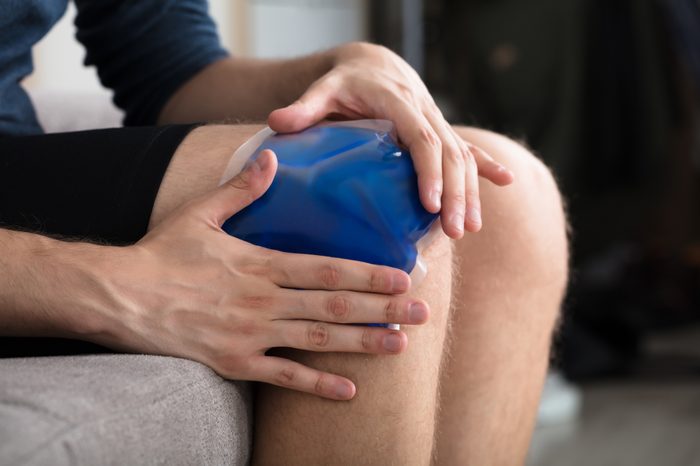
How to manage muscle pain
Prevention is so important when it comes to muscle pain, but once you are already feeling the pain here’s what you should do: Apply a cold compress for the first day or two, use an Ace bandage if there’s swelling, and take ibuprofen (if it’s too tough on your stomach, try acetaminophen), according to James F. Giglio, MD, chief of emergency medicine at Columbia University Medical Center, New York. “Give your aching muscles a rest for a few days too,” Dr. Giglio says. “The pain may get worse before it gets better, but if you’re still hurting after three or four days, see a doctor. It could be a more serious injury.”
